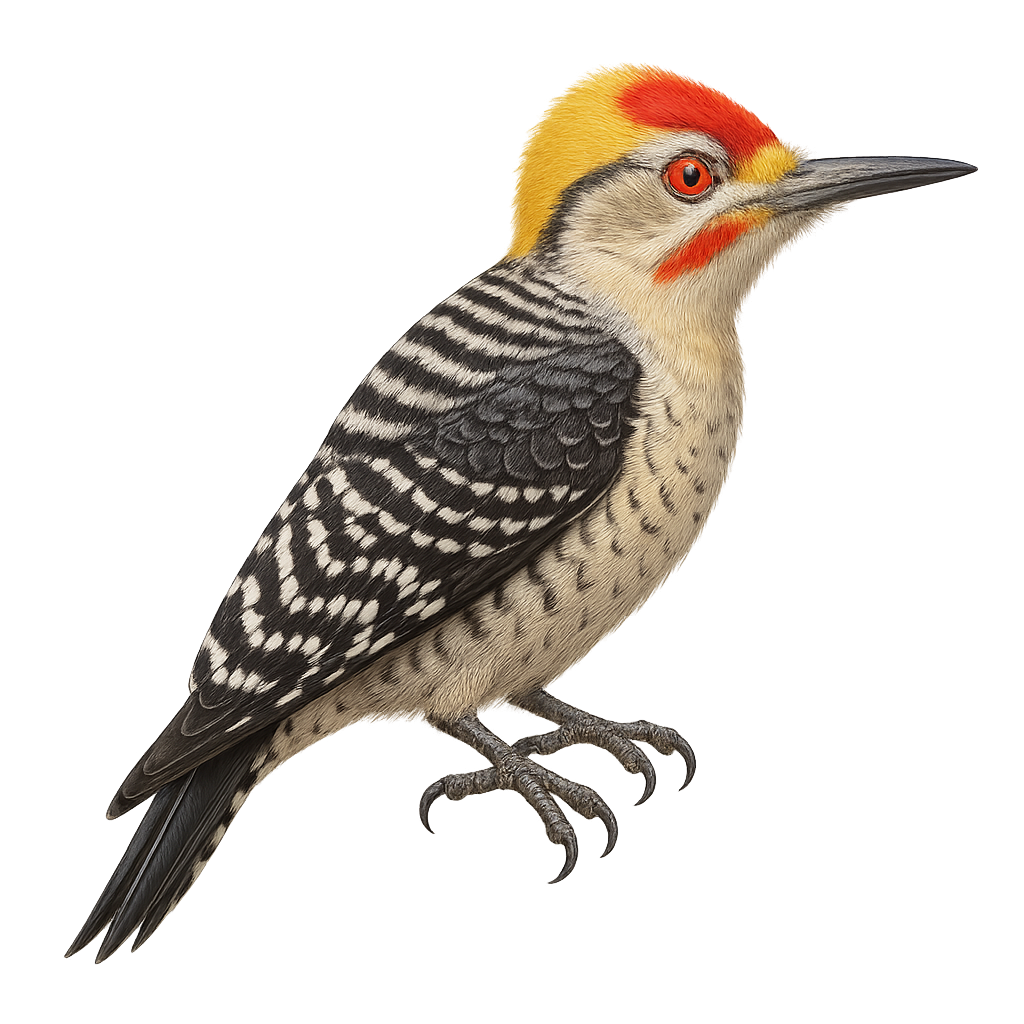Your wildlife photography guide.
Explore the golden-cheeked woodpecker in detail, study its behavior, prepare your shots.
Where to observe and photograph the golden-cheeked woodpecker in the wild
Learn where and when to spot the golden-cheeked woodpecker in the wild, how to identify the species based on distinctive features, and what natural environments it inhabits. The WildlifePhotographer app offers tailored photography tips that reflect the golden-cheeked woodpecker’s behavior, helping you capture better wildlife images. Explore the full species profile for key information including description, habitat, active periods, and approach techniques.
Golden-cheeked Woodpecker
Scientific name: Melanerpes chrysogenys

IUCN Status: Least Concern
Family: PICIDAE
Group: Birds
Sensitivity to human approach: Suspicious
Minimum approach distance: 10 m
Courtship display: March to May
Incubation: 13-15 jours
Hatchings: March to June
Habitat:
Dry forests, wooded areas, mangroves
Activity period :
Primarily active during the day, with peak activity in the morning and late afternoon.
Identification and description:
The Golden-cheeked Woodpecker, scientifically known as Melanerpes chrysogenys, is a colorful and fascinating bird primarily found in the dry forests and wooded areas of Mexico. This woodpecker measures about 20 to 22 cm in length and is distinguished by its bright red head, golden cheeks, and black and white back. Males and females have similar plumage, although males have a more pronounced red hue on the head. They are often observed drumming on tree trunks in search of insects, their main food source, although they also consume fruits and seeds. Their social behavior is interesting, as they can be seen in small family groups.
Recommended lens:
400mm – adjust based on distance, desired framing (portrait or habitat), and approach conditions.
Photography tips:
To photograph the Golden-cheeked Woodpecker, it is advisable to use a telephoto lens of at least 400mm to capture precise details without disturbing the bird. Look for areas where these woodpeckers are active, such as dry forests or mangroves. Be patient and discreet, as although they are suspicious, they can get used to your presence if you remain still. Take advantage of the morning or afternoon light to get well-lit shots.
The WildlifePhotographer App is coming soon!
Be the first to explore the best nature spots, track rutting seasons, log your observations, and observe more wildlife.
Already 1 430 wildlife lovers subscribed worldwide

